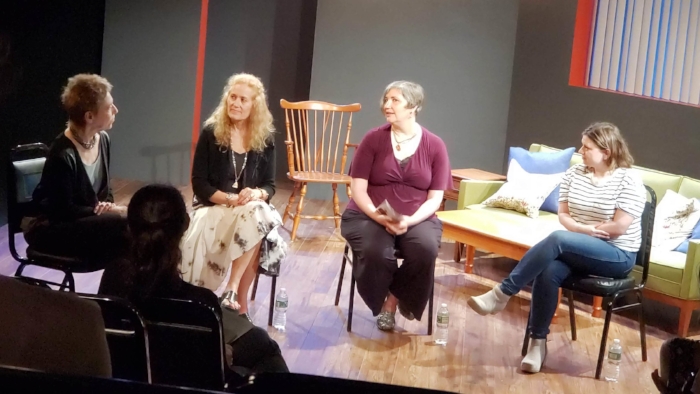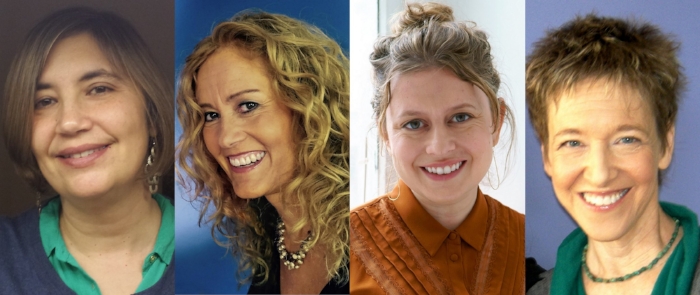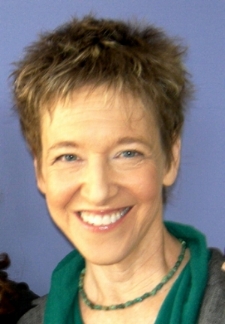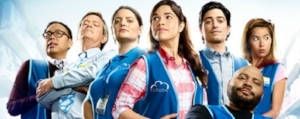When medicine advances, what gets left behind? How much of what midwives knew have we lost as modern medical practice sidelines them? In AMMA’S WIT, Sandra Daley-Sharif puts the lives and experiences of Black “granny” midwives centerstage as she tells the stories of two generations of midwives in early twentieth century Alabama: what they knew, what they suffered, how they coped.
AMMA’S WIT will have its first public reading this Thursday, June 6 at 3:00 PM at the Ensemble Studio Theatre as part of the 2024 EST/Sloan First Light Festival. The reading is free and reservations are encouraged.
Sandra kindly took the time to answer our many questions about the play.
(Interview by Rich Kelley)
What inspired you to write AMMA’S WIT?
The inspiration behind AMMA'S WIT is deeply rooted in my personal connection to the sacred art of midwifery and a profound reverence for the forgotten legacies of the granny midwives – those extraordinary Black women who embodied the divine power of bringing new life into the world.
I was born in my great-grandmother's house and having witnessed the empowering experience of both my daughters being delivered by midwives, I have always felt a profound connection to the God-given strength that lies within every woman's body. This connection fueled my desire to explore and honor the stories of those who came before us, the women who dedicated their lives to nurturing and supporting mothers during a time when hospitals were inaccessible to the poor, both Black and White.
Through my research, I discovered the narratives of trailblazers like Onnie Lee Logan, Mary Francis Hill Coley, Margaret Charles Smith, and countless others. These granny midwives were more than just birth attendants; they were family counselors, breastfeeding consultants, postpartum doulas, nutritionists, and advocates. Highly respected within their communities, they viewed their work as a sacred calling from God, a privilege to usher new life into the world.
Yet, despite their invaluable contributions, these women were ostracized and erased, victims of a society that sought to disempower women over their own bodies and choices. Their stories resonated with me on a profound level, igniting a desire to give voice to those who have been systematically silenced, to reclaim the narratives that have been suppressed, and to celebrate the resilience, spirituality, and unwavering dedication of these remarkable women.
In AMMA'S WIT, I have woven together these narratives, creating a tapestry that honors the legacy of the granny midwives, while also serving as a powerful reminder of the ongoing struggle for reproductive rights and autonomy. It is a tribute to the enduring strength of those who have fought to reclaim control over their bodies and their destinies, and a call to embrace the divine power that resides within every woman.
Why this play? Why now?
I think AMMA'S WIT is a timely and poignant reminder of the granny midwives' legacy. The play sheds light on their vital role in providing holistic healthcare and championing reproductive autonomy for women, especially in underserved communities. As the reversal of Roe v. Wade threatens to restrict access to safe and legal abortions, this play serves as a powerful reminder of the ongoing struggle for body autonomy and the importance of trusting women's ancestral knowledge and instincts.
Moreover, with Black women experiencing disproportionately higher rates of maternal mortality and preventable childbirth complications, AMMA'S WIT underscores the need for culturally competent and comprehensive maternal care. By honoring the granny midwives' approach to pregnancy and birthing, this play advocates a shift toward a more holistic healthcare model that empowers women and prioritizes their well-being.
What research did you do to write the play?
To write the play, I conducted extensive research by reading biographies of granny midwives, watching films/documentaries like All My Babies (about midwife Mary Francis Hill Coley) and Why Not Home?, interviewing current midwives, drawing from my personal experiences, and consulting with a liaison who works on bridging the tenuous relationship between hospitals and midwives. I also examined articles on women's experiences with the medical system, global childbirth practices involving midwifery, and the history of childbirth. This comprehensive approach informed a play that, I would say, is grounded in movement, text, and music to authentically capture the full-body experience of birth through dance and the rhythms that define time and space.
Did you encounter any surprises as you researched the stories of different midwives in twentieth-century Alabama?
A sobering discovery from my research was the persisting false beliefs among some healthcare providers about biological differences between Black and White people, such as Black people having "less sensitive nerve endings, thicker skin, and stronger bones." These harmful beliefs have led to medical providers today underestimating Black patients' pain levels and recommending inadequate relief measures. And, here’s the kicker, shockingly, the disparities exist regardless of education or income level: Black women who have a college education or higher experience a pregnancy-related mortality rate over five times higher than White women, and 1.6 times higher than even White women with less than a high school degree. This stark reality underscores the urgent need to address systemic biases and inequities in maternal healthcare.
While much of the play’s action focuses on the experiences of a fictional midwife, Amma Hagar Clark, a second plot line follows Billie Jean, a young woman, just shy of 16, pregnant by her father. Why was it important for you to include her storyline?
It was crucial to include Billie Jean's storyline as a pregnant teen, impregnated by her father, to confront the complex and controversial issue of abortion rights head-on. Drawing from the real-life stance of a midwife I researched, who refused to perform abortions due to her personal beliefs and experiences, this parallel plot line forces the audience to grapple with the profound ethical dilemmas surrounding body autonomy and reproductive choices. By bringing in this narrative, I invite what I believe is a vital and necessary conversation about the very body empowerment issue society is grappling with today.
What’s next for Sandra Daley-Sharif?
As a storyteller for Theatre and TV, I am driven by a passion to illuminate the stories of marginalized people with resilient spirits that have shaped our world, especially featuring women of color. My current projects are a testament to this mission.
With my new play (still researching) "Carved from Stone, Cast in Resilience," I am embarking on a journey to breathe life into the extraordinary legacies of Edmonia Lewis, Meta Warrick Fuller, and Augusta Savage – three groundbreaking African American sculptors whose triumphs and enduring influence have often been obscured. Through a blend of drama, visual storytelling, and the omniscient narration of the Goddess of Perseverance, I aim to depict the challenges and triumphs of these remarkable women, celebrating their indelible mark on the art world.
In "We Shall Overcome," a limited series for TV based on the novel The Cigar Factory, I am weaving together the parallel narratives of two working-class families, united by their shared struggles within the harsh confines of a cigar factory. As segregation initially blinds them to their common plight, the pivotal 1945 Tobacco Workers Strike ignites a powerful realization – that by joining forces, they can harness the strength of solidarity. "We Shall Overcome” not only captures a profound moment in labor history but also traces the roots of the iconic protest song that would later become the Civil Rights anthem, "We Shall Overcome.” Pitch deck available.
And then there's "Say It Loud," another limited series for TV; a vibrant exploration of the cultural revolution that swept through Harlem's iconic Apollo Theater in 1964. Here, I follow the fearless journey of a young production manager nurturing the greatest acts in the history of soul music, navigating a world in the throes of transformation with unwavering determination. Pitch deck and pilot script available.
Through these diverse narratives, I strive to amplify the voices that have been muted, to shed light on the extraordinary resilience that has paved the way for progress, and to inspire audiences to embrace the power of perseverance in the face of adversity.
AMMA’S WIT is one of six readings of new plays in development as part of the EST/Sloan Project in this year’s First Light Festival, which runs until June 17. All readings are free, but reservations are encouraged. The festival is made possible through the alliance between The Ensemble Studio Theatre and The Alfred P. Sloan Foundation.



























